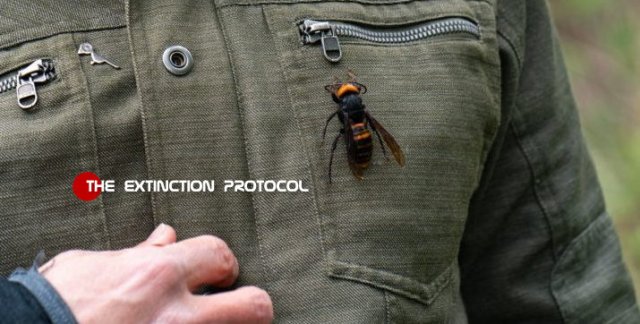
The insect was dead, and after inspecting it, Mr. Kornelis had a hunch that it might be an Asian giant hornet. It did not make much sense, given his location in the world, but he had seen an episode of the YouTube personality Coyote Peterson getting a brutal sting from one of the hornets. Beyond its size, the hornet has a distinctive look, with a cartoonishly fierce face featuring teardrop eyes like Spider-Man, orange and black stripes that extend down its body like a tiger, and broad, wispy wings like a small dragonfly. Mr. Kornelis contacted the state, which came out to confirm that it was indeed an Asian giant hornet. Soon after, they learned that a local beekeeper in the area had also found one of the hornets.
Mr. Looney said it was immediately clear that the state faced a serious problem, but with only two insects in hand and winter coming on, it was nearly impossible to determine how much the hornet had already made itself at home. Over the winter, state agriculture biologists and local beekeepers got to work, preparing for the coming season. Ruthie Danielsen, a beekeeper who has helped organize her peers to combat the hornet, unfurled a map across the hood of her vehicle, noting the places across Whatcom County where beekeepers have placed traps.
Asian Giant Hornets – in China – Filed October 3, 2013
“Most people are scared to get stung by them,” Ms. Danielsen said. “We’re scared that they are going to totally destroy our hives.” Adding to the uncertainty — and mystery — were some other discoveries of the Asian giant hornet across the border in Canada. In November, a single hornet was seen in White Rock, British Columbia, perhaps 10 miles away from the discoveries in Washington State — likely too far for the hornets to be part of the same colony. Even earlier, there had been a hive discovered on Vancouver Island, across a strait that probably was too wide for a hornet to have crossed from the mainland.
“It was like having red-hot thumbtacks being driven into my flesh,” he said. He ended up getting stung at least seven times, some of the stings drawing blood. Jun-ichi Takahashi, a researcher at Kyoto Sangyo University in Japan, said the species had earned the “murder hornet” nickname there because its aggressive group attacks can expose victims to doses of toxic venom equivalent to that of a venomous snake; a series of stings can be fatal. The night he got stung, Mr. Bérubé still managed to eliminate the nest and collect samples, but the next day, his legs were aching, as if he had the flu. Of the thousands of times he has been stung in his lifetime of work, he said, the Asian giant hornet stings were the most painful. –DNYUZ

Comments
Post a Comment